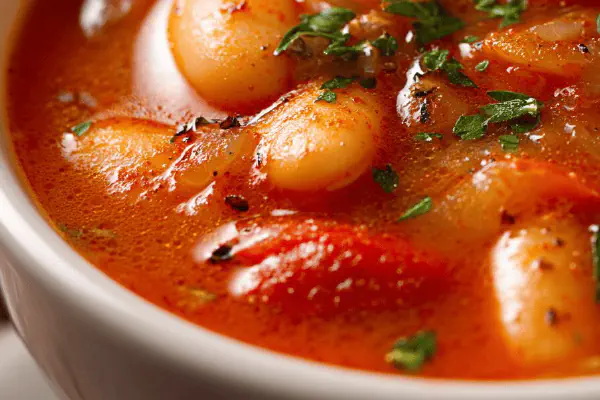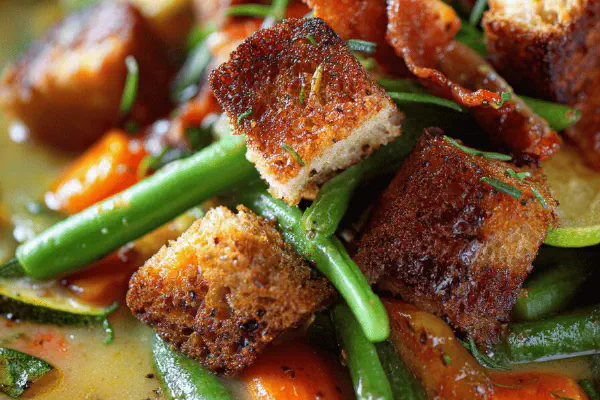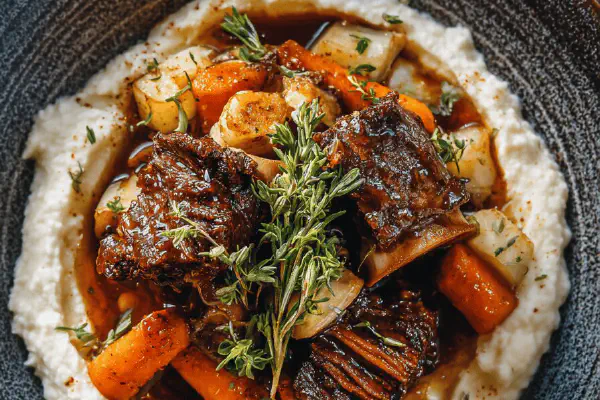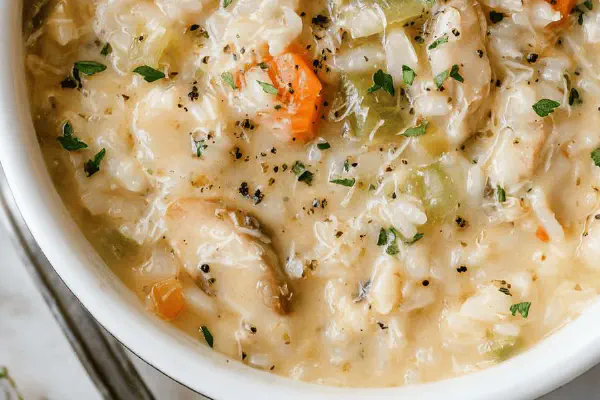Provencal Garlic Egg Soup
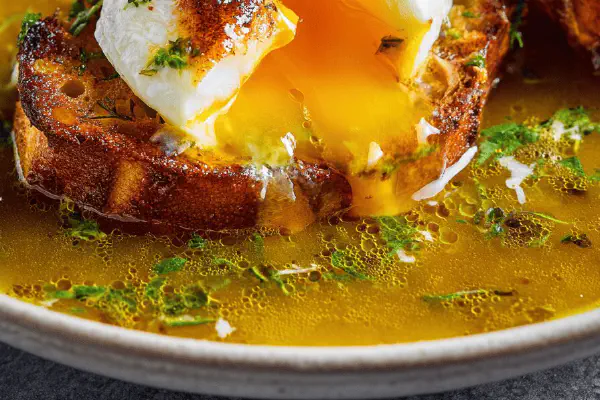
By Emma
Certified Culinary Professional
Ingredients
- 9 garlic cloves, halved lengthwise
- 45 ml olive oil (3 tbsp)
- 1.3 liters chicken stock
- 3 fresh thyme sprigs
- 1 pinch turmeric powder
- 4 thick slices country bread
- 180 g shredded raclette cheese
- 4 fresh eggs
About the ingredients
Method
- Heat olive oil over medium-low. Lay garlic halves cut-side down. Low and slow. The smell starts sweet and toasty, never brown or sharp. Listen for subtle sizzle. Turn off just before golden; burnt=bitterness. Patience.
- Pour in chicken stock. Add thyme sprigs whole, let them bob gently without breaking leaves. Simmer uncovered about 12-18 minutes. Steam scented with garlic and fresh herb. Skim foam if any rises.
- Fish out thyme and garlic. Use back of spoon to mash softened garlic cloves into broth, releasing creamy texture and mellow flavor. Stir in turmeric now, for color and mild earthiness.
- While broth simmers, toast bread slices under broiler until edges char slightly but centers still flexible. Hot but not crunchy hard. Immediately cover each piece with shredded raclette. Let heat from toast melt cheese—gooey, stringy but not oily.
- Turn broth to bare simmer. One at a time, crack eggs into small cups. Create a gentle swirl in broth and slip egg in. Poach carefully. Whites firm but tender, yolks slow wobble. About 3-4 minutes but check visually. Lift eggs onto cheese-topped bread in deep warm plates.
- Pour hot garlic broth over bread and eggs, careful not to drown cheese layer. Should be steaming, carrying aroma to table.
- Serve immediately. Spoon broth between bites to keep crisp-cheese-moist balance. Experiment with thyme swap if unavailable, marjoram also good. Turmeric optional but adds golden hue and subtle warmth.
Cooking tips
Chef's notes
- 💡 Garlic softening is a slow dance—olive oil at low temp, garlic halves down, no rush. Watch for sweet smells not brown. Burnt garlic brings bitterness, discard if spotted. Flip timing by aroma and faint sizzle. Patience wins texture.
- 💡 Toast bread under broiler fast. Edges char slightly, keep centers flexible. Too crunchy ruins soft poached eggs on top. Immediate cheese layer melts by residual heat not direct flame. Must be gooey strands, avoid oil puddles or burned cheese.
- 💡 Poaching eggs needs near-static simmer. Rapid boil shreds whites. Use small cup for egg slip-in, swirl broth gently. Timing not by clock but feel—yolks wobble but whites firm. Broken yolk repair: add fresh egg, serve separately or prep eggs earlier.
- 💡 Sub turmeric for saffron here. Earthy tone, golden hue without rare spice cost. Thyme replaces sage—less aggressive, fresh woodsy notes. Fresh thyme sprigs bob whole to avoid bitter leaf bits floating, easier strain out at end.
- 💡 Garlic cloves halved but mostly intact gives mellow flavor. Too crushed or minced turns harsh and raw. Toast bread day-old fails structurally, disintegrates quickly in broth. Olive oil choice matters: fruity or peppery shifts garlic aroma profile subtly.
Common questions
Why keep garlic halves intact?
Halves soften, release flavor slow; crushed bits hit sharp and raw tones. Intact halves avoid bitter edges. Also easier to fish out after simmering, leaves creamy broth without gritty bits.
Can I swap raclette cheese?
Raclette melts better under broiler heat than gruyere, but fontina or young gouda could work. Watch melt time closely; too oily or oily cheese clogs mouthfeel. Not all cheeses behave same under flame.
How to prevent bitter garlic?
Low heat key. Brown spots mean burn, toss garlic and restart batch. Smell must stay sweet, light nutty. Listen for subtle sizzle, not aggressive crackle. Rush garlic, bitterness sneaks in fast. Slow wins here, no shortcuts.
Leftover soup handling?
Broth heats well but bread loses crispness quickly. Store broth separately if possible. Reheat gentle, avoid boiling eggs again, yolks overcook, whites toughen. Bread-cheese toast best made fresh, reheat makes it soggy or rubbery.
